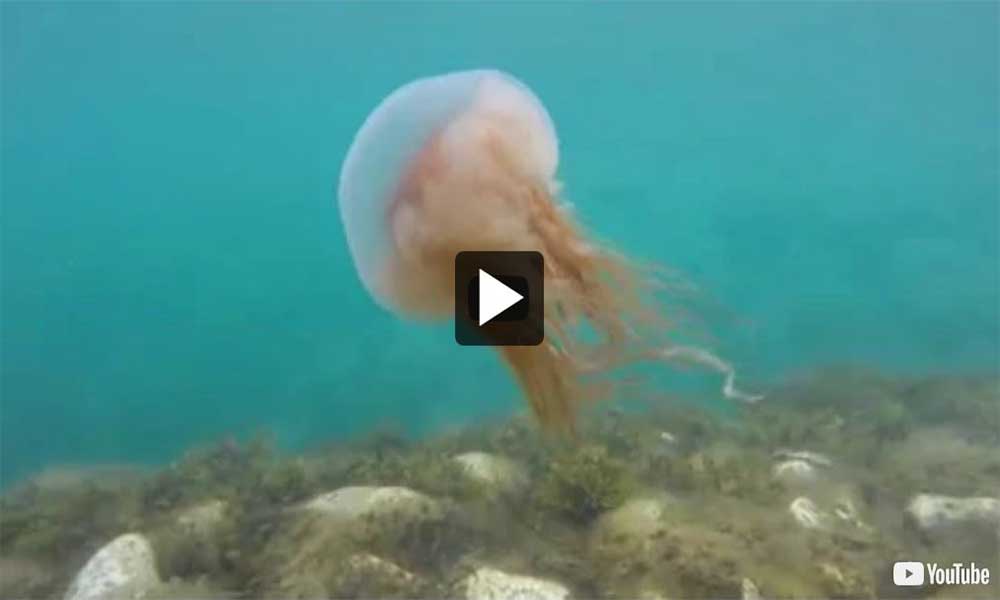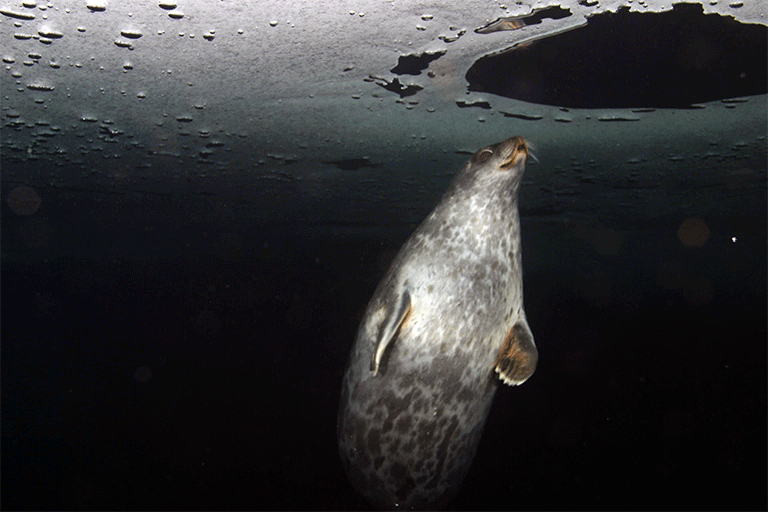Anguniaqvia niqiqyuam Marine Protected Area (MPA)
Phonetic pronunciation: Ung-u-niak-via Ni-kig-e-um
Note:
Charts, diagrams and contact information on this website are provided for information purposes only and should not be used for fishing, navigation or other purposes. Please refer to the MPA Regulations or contact your regional Fisheries and Oceans Canada office for official coordinates.
At-A-Glance
At-A-Glance

Anguniaqvia niqiqyuam MPA
Click to Enlarge
Dataset for all MPAs available.

Video: Anguniaqvia niqiqyuam Marine Protected Area
Location
Northwest Territories, within the Inuvialuit Settlement Region (ISR), as defined by the Western Arctic Claim - Inuvialuit Final Agreement.; Western Arctic Bioregion.
Approximate Size (km²) contribution to Marine Conservation Targets
2,358 km²
Approximate % coverage contribution to Marine Conservation Targets
0.04%
Date of designation
October 2016
Conservation Objectives
- To maintain the integrity of the marine environment offshore of the Cape Parry Migratory Bird Sanctuary so that it is productive and allows for higher trophic level feeding;
- To maintain the habitat to support populations of key species (such as beluga whales, Arctic char, and ringed and bearded seals).
Prohibitions
Anguniaqvia niqiqyuam MPA (AN MPA) Regulations prohibit activities that disturb, damage, destroy, or remove from this Area, living marine organisms or any part of their habitat, unless listed as exceptions in the Regulations or approved by the Minister.
Environmental Context
The AN MPA has been identified as an ecologically important area that provides critical habitat for Arctic char, cod, beluga whales, ringed and bearded seals, polar bears, as well as sea birds. It is also culturally important for the Inuvialuit, as it supports subsistence harvesting of Arctic char, beluga, birds and other species.
In the open-water season, near-shore waters provide migratory and feeding habitat for Arctic char and other fish species that migrate from the sea to fresh water to spawn. Offshore waters support a variety of marine invertebrates, fish, marine mammals and birds.
During winter, the sea ice in the AN MPA provides breeding and feeding habitat for polar bears and seals. Areas of open water within the sea ice (polynyas) offer critical feeding areas and promote aggregations of marine mammals and their prey.
Ecological Importance
Ecological Importance
The Anguniaqvia niqiqyuam Marine Protected Area (ANMPA) has been identified as an ecologically important area that provides critical habitat for Arctic char, cod, beluga and bowhead whales, ringed and bearded seals, polar bears, as well as sea birds.
In the open-water season, near shore waters in the ANMPA provide migratory and feeding habitat for Arctic char and other fish species that migrate from the sea to fresh water to spawn. Offshore waters in the ANMPA support a variety of marine invertebrates, fish, marine mammals and birds.
During winter, the sea ice in the ANMPA provides breeding and feeding habitat for polar bears and seals. Areas of open water within the sea ice (polynyas) offer critical feeding areas and promote aggregations of marine mammals and their prey.
The ANMPA is also culturally important for the Inuvialuit, as it supports subsistence harvesting of Arctic char, beluga, birds and other species by the community of Paulatuk, Northwest Territories (NT). The community also utilizes portions of the ANMPA for travel, education and other traditional activities.
The Arctic climate is experiencing rapid environmental changes resulting in new socio-economic opportunities and challenges for the Arctic region. For example, warming may result in an extended shipping season or create new shipping routes. This may make access to mining, oil and gas exploration and development, increased commercial fishing opportunities, research, and tourism easier across the Arctic. Increased accessibility for these types of activities poses a risk to the habitat, biodiversity and ecosystem functions within the Arctic, generally, and within the ANMPA, specifically.
The ANMPA has been identified as ecologically important by both science and Inuvialuit traditional knowledge. MPA designation provides early, long-term and comprehensive protection to this ecologically important marine area, consistent with the purposes of Section 35 of the Oceans Act. It will allow for the proper management of human-induced pressures that would otherwise adversely impact the ecologically significant components of the area.
Management & Conservation
Management & Conservation
The Anguniaqvia niqiqyuam Marine Protected Area (ANMPA) was established collaboratively by Fisheries and Oceans Canada (DFO) and the Inuvialuit, together with stakeholders from industry, environmental non-government organizations (ENGOs) and the government of the Northwest Territories. DFO and the Fisheries Joint Management Committee, along with the community of Paulatuk co-manage the area and, together, provide guidance on management, monitoring and research decisions for the ANMPA.
The conservation objectives of the MPA are:
- To maintain the integrity of the marine environment offshore of the Cape Parry Migratory Bird Sanctuary so that it is productive, allows for higher trophic level feeding, and minimizes impacts from human activities on polynya/sea ice.
- To maintain the habitat to support populations of key species (such as beluga whales, Arctic char, and ringed and bearded seals). This is the first conservation objective to be based solely on Indigenous traditional and local knowledge.
An ANMPA management plan is being developed to guide the day to day management, governance, and monitoring of the ANMPA. It will also guide reporting on the area. The management plan will describe public education and outreach, enforcement and compliance initiatives, as well as regulatory and non-regulatory measures. The inclusion of regulatory and non-regulatory measures is essential to ensuring the continued support of other legislation, regulations and policies that contribute to the protection of this area.
The management plan will address needs identified by the community of Paulatuk, co-management partners, DFO, additional partners and proponents on aspects related to the governance and the management responsibilities of the area. The plan will also describe and define the roles and responsibilities of the Western Arctic MPA Steering Committee that provides advice to DFO regarding the management of the ANMPA. This will include guidelines and work plans related to the non-regulatory management components.
As the lead federal authority for the ANMPA, DFO has the overall responsibility for ensuring compliance with, and enforcement of, the Regulations. This will be undertaken through the Department’s enforcement responsibilities under the Oceans Act and the Fisheries Act, and other departmental legislation regarding fisheries conservation, environmental protection, habitat protection and marine safety. Enforcement officers designated by the Minister according to Section 39 of the Oceans Act would enforce the management actions and Regulations for these areas. Enforcement of the Regulations would be dealt with under Section 37 of the Oceans Act, as would any offences.
Activity application
Activity application for Anguniaqvia niqiqyuam MPA
Scientific research or monitoring, educational or commercial marine tourism activities may be carried out in the AN MPA if a proponent submits an activity plan to the Department of Fisheries and Oceans (DFO) and receives Ministerial approval.
Research and Publications
Research and Publications
- Date modified:


